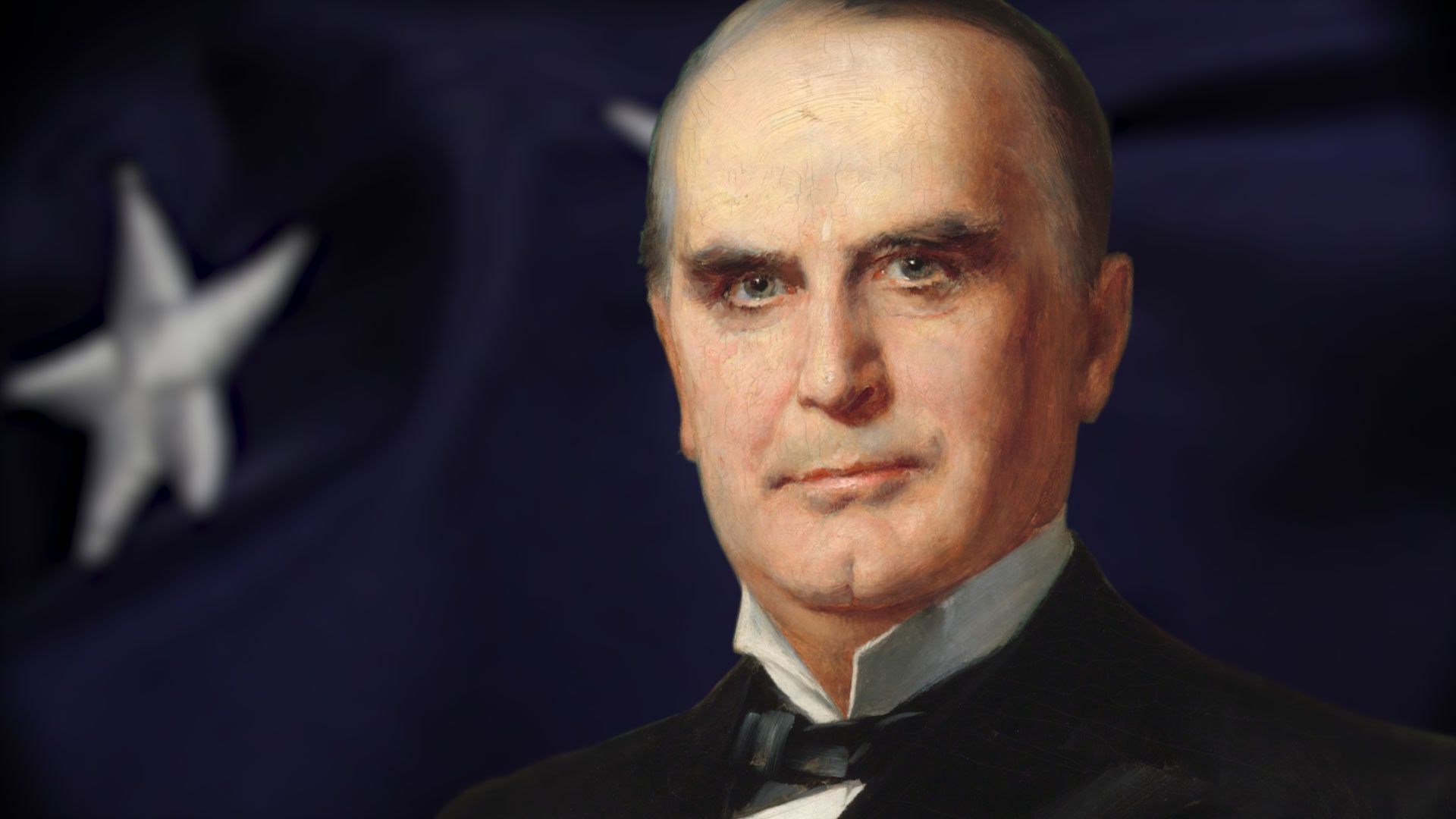
Who was William McKinley? William McKinley, the 25th President of the United States, served from 1897 until his assassination in 1901. Known for leading the nation during the Spanish-American War, his presidency marked significant economic growth and the annexation of territories like Puerto Rico, Guam, and the Philippines. McKinley’s policies helped shape modern America, emphasizing protective tariffs and the gold standard. His leadership style was calm and steady, earning him respect across party lines. Despite his tragic end, McKinley's impact on American history remains profound. Ready to dive into 35 intriguing facts about this influential leader? Let’s get started!
Early Life and Education
William McKinley, the 25th President of the United States, had a fascinating early life that shaped his future.
- Born on January 29, 1843, in Niles, Ohio, McKinley was the seventh of nine children.
- His parents, William McKinley Sr. and Nancy Allison McKinley, were of Scots-Irish descent.
- McKinley attended Allegheny College in Meadville, Pennsylvania, but had to leave due to illness and financial difficulties.
- He later enrolled at the Poland Seminary in Ohio, where he developed a love for debate and public speaking.
- McKinley briefly worked as a postal clerk and a teacher before enlisting in the Union Army during the Civil War.
Military Service
McKinley's military service during the Civil War was a significant part of his life and career.
- He enlisted as a private in the 23rd Ohio Volunteer Infantry in 1861.
- McKinley served under future President Rutherford B. Hayes, who became a lifelong mentor.
- He was promoted to the rank of brevet major by the end of the war due to his bravery and leadership.
- McKinley participated in several key battles, including Antietam and South Mountain.
- His experiences in the war deeply influenced his views on national unity and veterans' issues.
Political Career
McKinley's political journey began at the local level and eventually led him to the highest office in the land.
- He was elected to the U.S. House of Representatives in 1876, representing Ohio's 17th district.
- McKinley served seven terms in Congress, focusing on economic issues and protective tariffs.
- He became a prominent advocate for the McKinley Tariff of 1890, which raised import duties to protect American industries.
- McKinley lost his congressional seat in 1890 due to redistricting but made a comeback as governor of Ohio in 1891.
- As governor, he implemented progressive reforms, including labor laws and education improvements.
Presidential Campaigns
McKinley's presidential campaigns were notable for their innovative strategies and widespread support.
- He ran for president in 1896, defeating Democrat William Jennings Bryan in a closely contested election.
- McKinley's campaign manager, Mark Hanna, revolutionized political campaigning with extensive fundraising and media outreach.
- The 1896 campaign was marked by the "Front Porch Campaign," where McKinley addressed supporters from his home in Canton, Ohio.
- McKinley won re-election in 1900, again defeating Bryan, with a focus on economic prosperity and national unity.
- His second term was cut short by his assassination in 1901.
Presidential Achievements
McKinley's presidency was marked by significant achievements both domestically and internationally.
- He signed the Dingley Tariff Act in 1897, which raised tariffs to protect American industries.
- McKinley oversaw the annexation of Hawaii in 1898, expanding U.S. territory in the Pacific.
- He led the nation during the Spanish-American War in 1898, resulting in the U.S. acquiring Puerto Rico, Guam, and the Philippines.
- McKinley promoted the Open Door Policy, advocating for equal trading rights in China.
- His administration supported the Gold Standard Act of 1900, stabilizing the U.S. currency.
Assassination and Legacy
McKinley's tragic assassination left a lasting impact on the nation and his legacy.
- On September 6, 1901, McKinley was shot by anarchist Leon Czolgosz at the Pan-American Exposition in Buffalo, New York.
- He succumbed to his injuries on September 14, 1901, making him the third U.S. president to be assassinated.
- McKinley's death led to the presidency of Theodore Roosevelt, who continued many of his policies.
- His legacy includes the promotion of American industrial growth and international influence.
- McKinley is remembered for his dedication to national unity and economic prosperity.
Personal Life
Beyond politics, McKinley's personal life was filled with love and tragedy.
- He married Ida Saxton in 1871, and the couple had two daughters who both died in infancy.
- Ida suffered from epilepsy and depression, and McKinley was known for his devotion to her well-being.
- The McKinleys were known for their close and affectionate relationship, despite their personal losses.
- McKinley was a devout Methodist and often attended church services.
- He was known for his kindness, humility, and strong moral character, which endeared him to many Americans.
McKinley's Legacy Lives On
William McKinley's impact on American history remains significant. His presidency saw the U.S. emerge as a global power, thanks to victories in the Spanish-American War and the annexation of territories like Puerto Rico and Guam. McKinley's economic policies, including the Gold Standard Act, helped stabilize the nation's economy.
His tragic assassination in 1901 cut his second term short, but his influence endures. McKinley's dedication to modernization and expansion left a lasting mark on the country. His leadership style, characterized by calm decisiveness, set a standard for future presidents.
Remembering McKinley means acknowledging both his achievements and the complexities of his era. His legacy is a testament to the transformative power of leadership during pivotal moments in history. So, next time you think about American presidents, give a nod to McKinley—his contributions shaped the nation we know today.
Was this page helpful?
Our commitment to delivering trustworthy and engaging content is at the heart of what we do. Each fact on our site is contributed by real users like you, bringing a wealth of diverse insights and information. To ensure the highest standards of accuracy and reliability, our dedicated editors meticulously review each submission. This process guarantees that the facts we share are not only fascinating but also credible. Trust in our commitment to quality and authenticity as you explore and learn with us.


